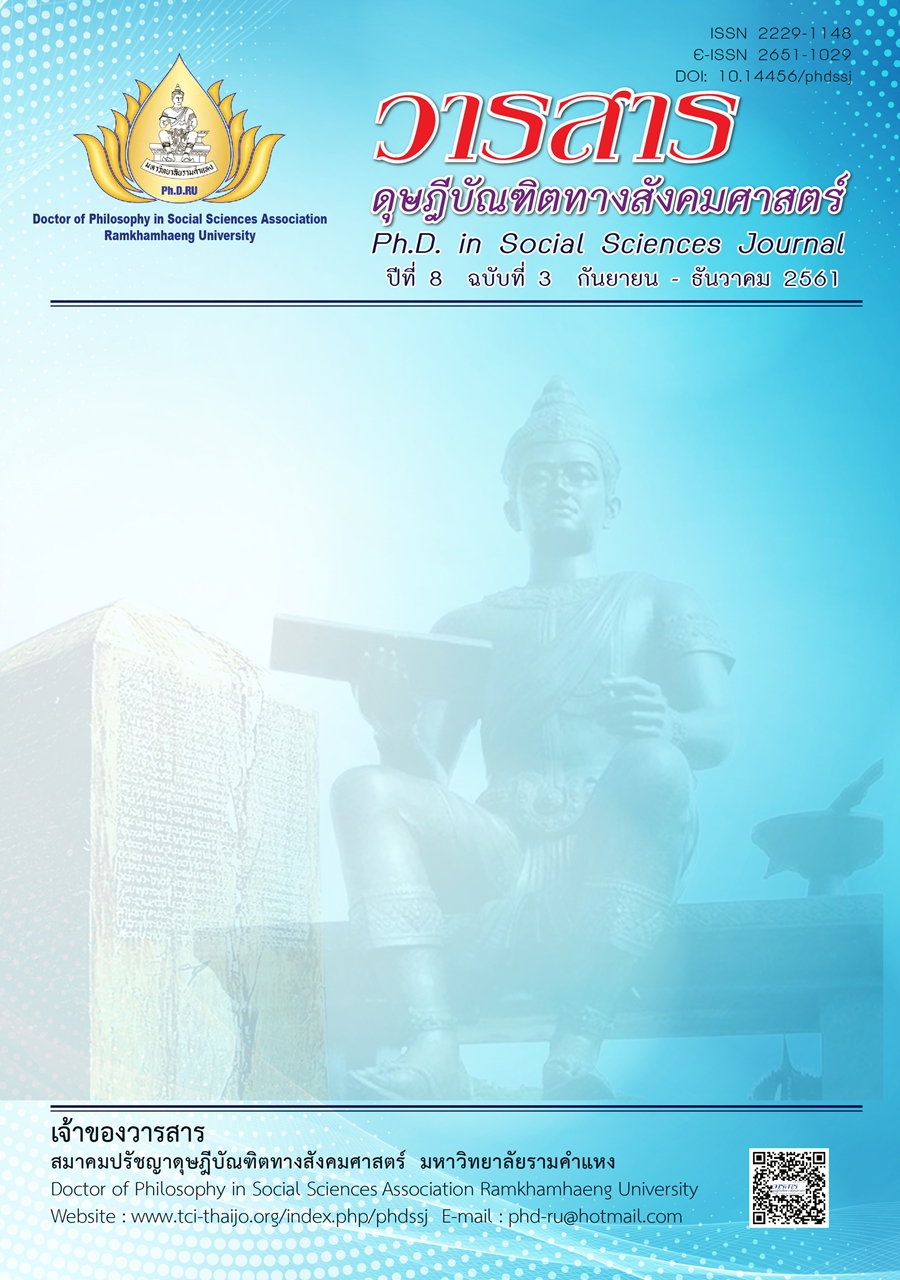The Moderating Effects of Customer Relationship Management on the Building of Sustainable Customer Loyalty in the Gems and Jewelry Industry
Main Article Content
Abstract
In this dissertation, the researcher studies (1) product quality, service quality, perceived value, customer satisfaction, trust, and the loyalty of gems and jewelry industry customers. The researcher also examines (2) the influence of product quality, service quality, perceived value, customer satisfaction, and trust on customer loyalty as based on ACS.I Model.). and (3) the moderating effects of customer relationship management on changes in the relationships between customer satisfaction and customer loyalty and between trust and customer loyalty.
In this mixed-methods research approach, In the quantitative phase of research, the researcher constituted of 500 Samples and using a questionnaire as an instrument of research, the researcher subsequently collected germane data from the members of the sample. In the qualitative phase of research, the researcher carried out individual in-depth interviews with key informants. The informants were 13 gem and jewelry industry administrators. Findings are as follows:
In respect to all latent variables, the researcher found that product quality, service quality, perceived value, customer satisfaction, and trust exhibited means at a high level. The linking of the latent variables reflects the American Customer Satisfaction Index (ACSI) model.
Furthermore, the researcher found that customer relationship management did not influence the relationships between customer satisfaction and customer loyalty and between trust and customer loyalty at a statistically significant level. However, there was a tendency for conditional direct effects to influence the relationships between customer satisfaction and customer loyalty and between trust and customer loyalty.
Article Details
Academic articles, research articles, and book reviews in the Ph.D. in Social Sciences Journal are author’s opinions, and not the publisher’s, and is not the responsibility of the Ph.D. in Social Sciences Journal Philosophy Association, Ramkhamhaeng University. (In the case that research is done on human, the researcher has to be trained in Ethics for Doing Research on Human Training and has to produce the evidence of the training).
References
Arfai, A., Valashejerdi, N. F., & Najafi, Y. (2013). The impact of customer satisfaction and bank image on loyalty: A case study (Sanandaj Private Banks) using structural equations method. International Research Journal of Applied and Basic Sciences, 4(4), 768-775.
Awan, A. G. (2014). Impact of customer satisfaction on brand loyalty an empirical analysis of home appliances in Pakistan. British Journal of Marketing Studies, 2(8), 18-32.
Boksberger, P. E., & Melsen, L. (2011). Perceived value: A critical examination of definitions, concepts and measures for the service industry. Journal of Services Marketing, 25(3), 229-240.
Casalo, L., Flavian, V., &. Guinaliu, M. (2010). Relationship quality, community promotion and brand loyalty in virtnal communities: Evidence from free software communities. Interactional Journal of Information Management, 30(4), 357-367.
Jeong, Y., & Lee, Y. (2010). A study on the customer satisfaction and customer loyalty of furniture purchaser in on-line shop. Asian Journal on Quality, 11(2),146-156.
Kassim, A. W. M., Igau, O. A., Harun, A., & Tahajuddin, S. (2014). Mediating effect of customer satisfaction on perceived product quality, perceived value, and their relation to brand loyalty. International Journal of Research in Management & Business Studies, 1(2), 13-18.
Khan, I. (2012). Impact of customers satisfaction and customers retention on customer loyalty. International Journal of Scientific & Technology Research, 1(2), 106-110.
Klankaew, P., & Krimjai, N. (2016). Strengthening of business administration and medium-sized enterprises in export of gems and jewelry industry in Bangkok and vicinity, Journal of Management Science, 3(2), 29-43.
Leecharoen B., Butcher K., & Chomvilailuk R. (2014). Examining the association between customer satisfaction and repurchase behavior in fashion retailing. International Journal of Business Tourism and Applied Sciences, 2(1), 57-68.
Levine, S. (2000). The rise of CRM. America’s Network, 104(6), 34.
Minami, C., & Dawson, J. (2007) The CRM Process in retail and service sector firms in Japan: Loyalty development and financial return. Journal of Retailing and Consumer Services, 15(5), 375-385.
Mohammad, R., & Sara, T. (2014). Investigating the effect of perceived service quality, perceived value, brand image, trust, customer satisfaction on repurchase intention and recommendation to other case study: LG company. European Journal of Business and Management, 6(34), 181-186.
Nunnally, J. C. (1967). Psychometric theory. New York: McGraw-Hill.
Parasuraman, A., Zeithaml, V. A., & Berry, L. L. (1988). SERVQUAL: A multiple-item scale for measuring consumer perceptions of service quality. Journal of Retailing, 64(1), 12-40.
Piri, Z., & Lotfizadeh, F. (2016). Investigation of the influence of perceived quality, price and risk on perceived product value for mobile consumers. Asian Social Science, 12(1), 103-116.
Razak, I. (2016). The impact of product quality and price on customer satisfaction with the mediator of customer value Journal of Marketing and Consumer Research, 30(1), 59-68.
The Gem and Jewelry Institute of Thailand. (2017). The export of gems and jewelry in Thailand the first quarter of 2017. Bangkok: Author. [In Thai]
Wang, J., DiRusso, D., Gao, J., Li, J., & Zheng, Y. (2016). The roles of product quality and trust in customer satisfaction and purchase decision a study of we chat shopping in China. Quarterly Journal of Business Studies, 2(3), 128-133.
Woodruff, R. B. (1997). Customer value: The next source for competitive advantage. Journal of the Academy Marketing Science, 25(2), 139-154.


